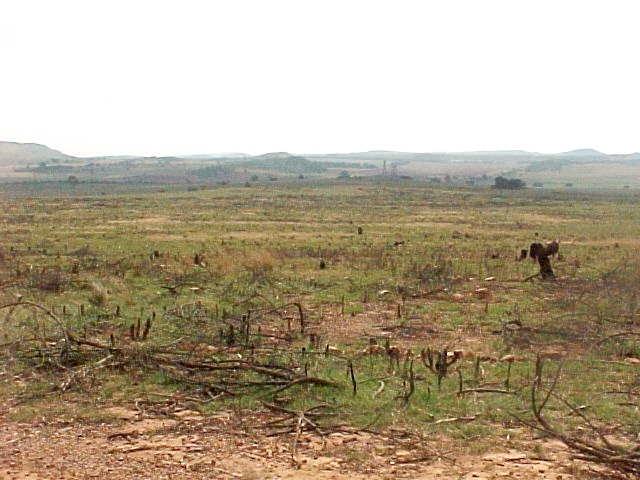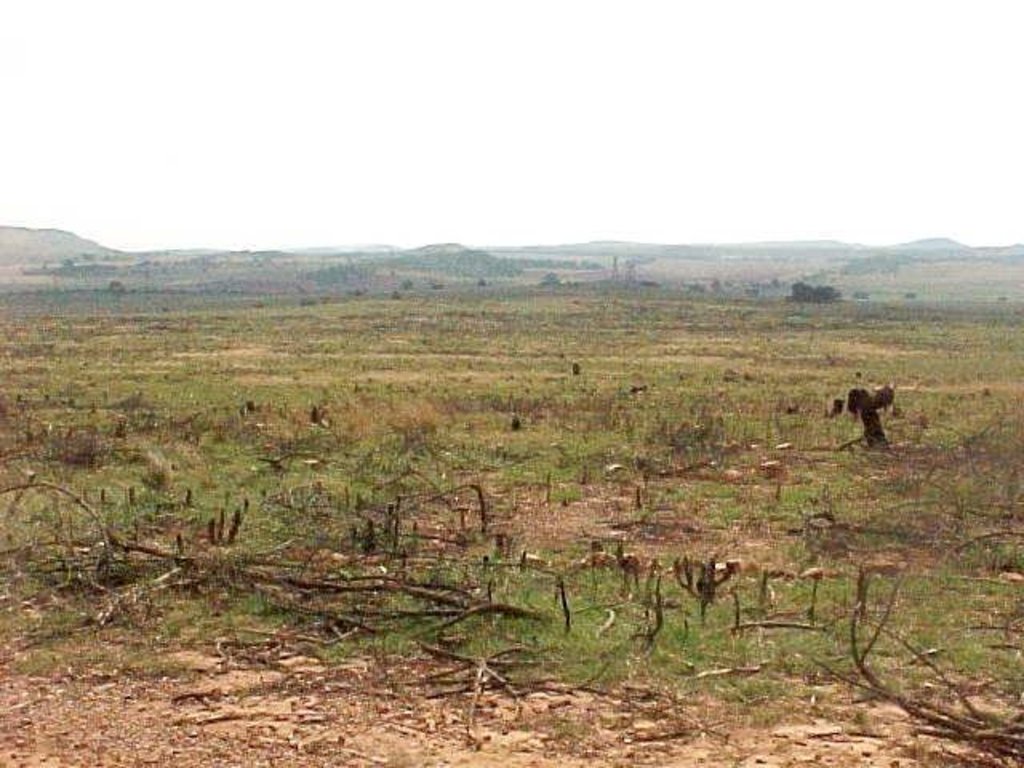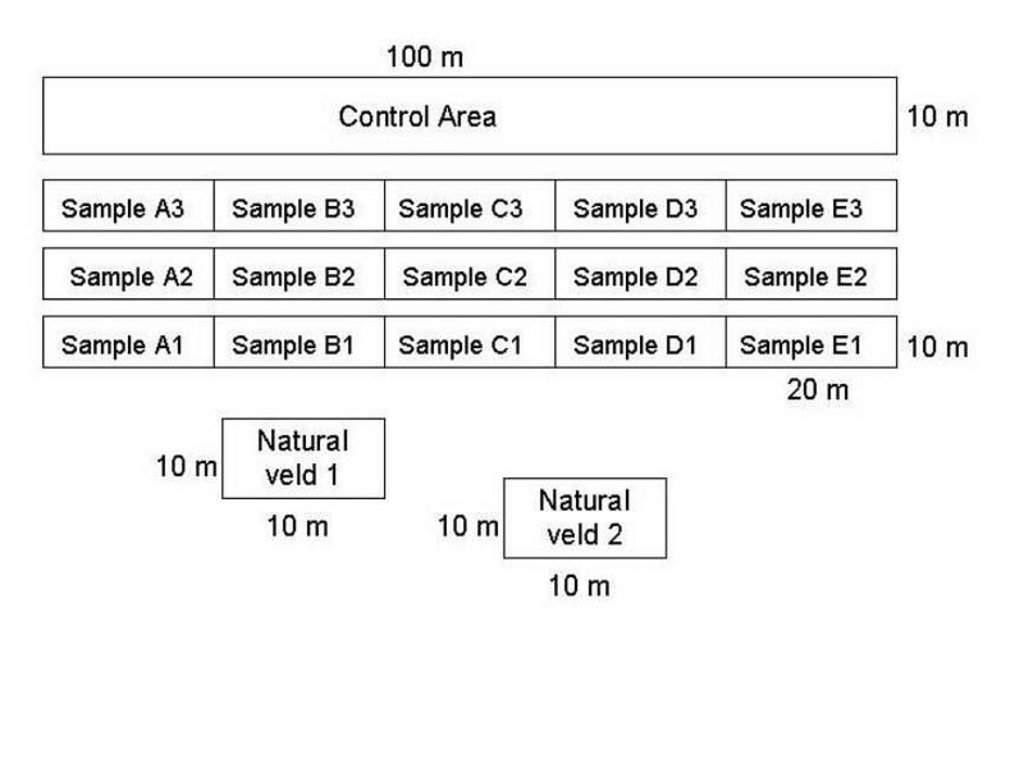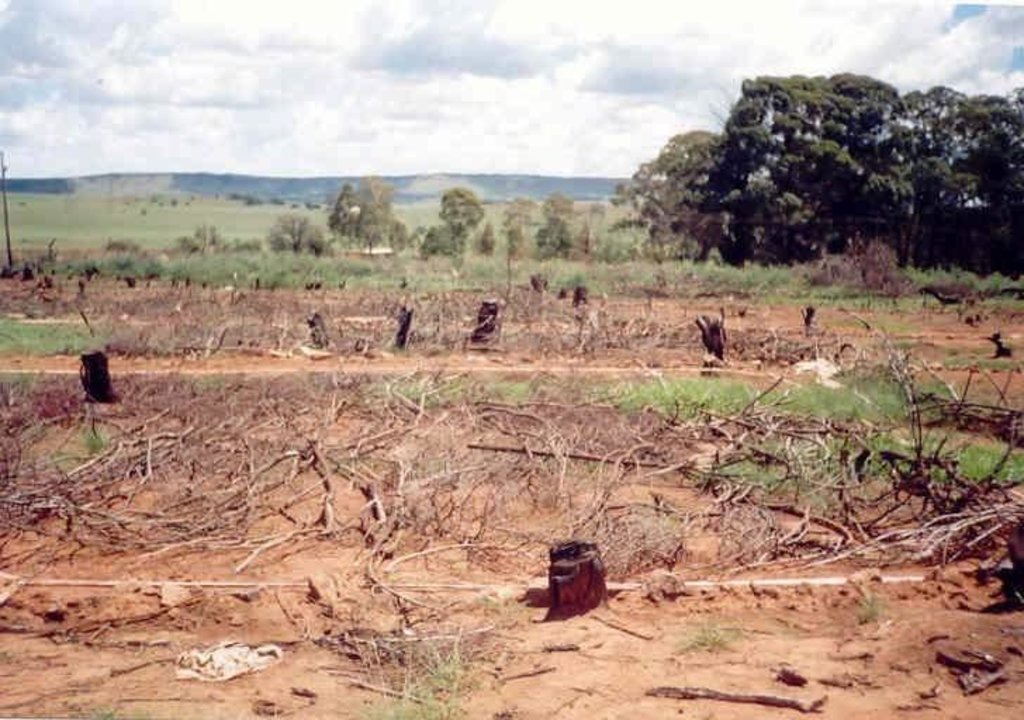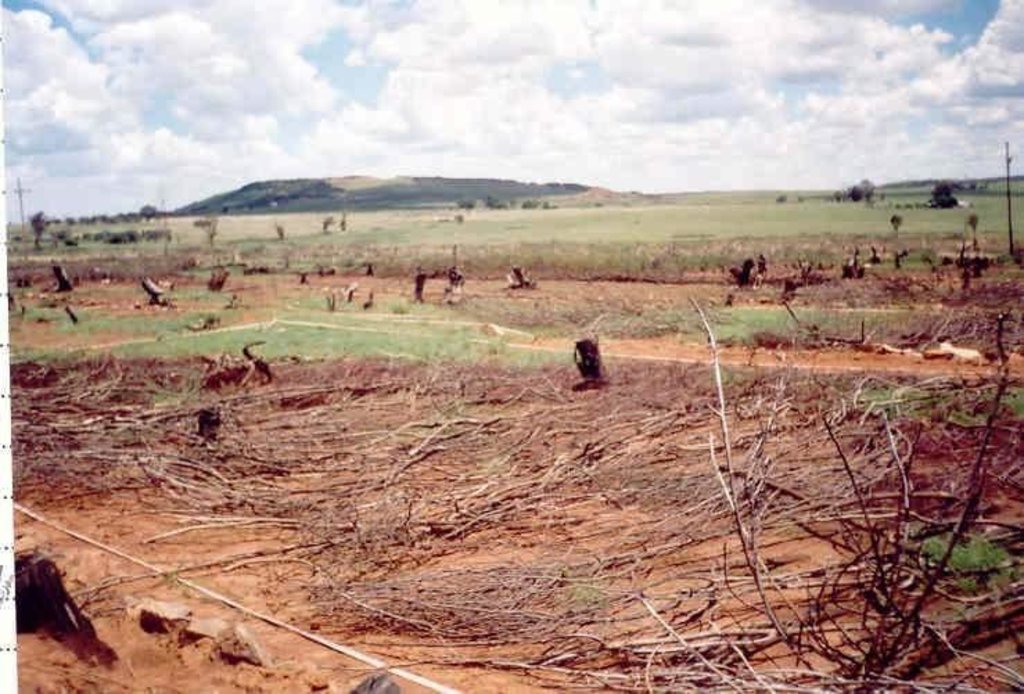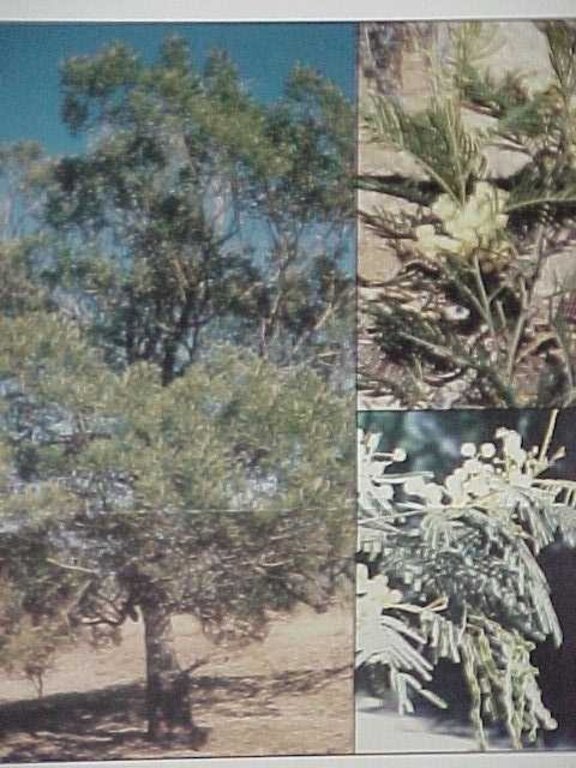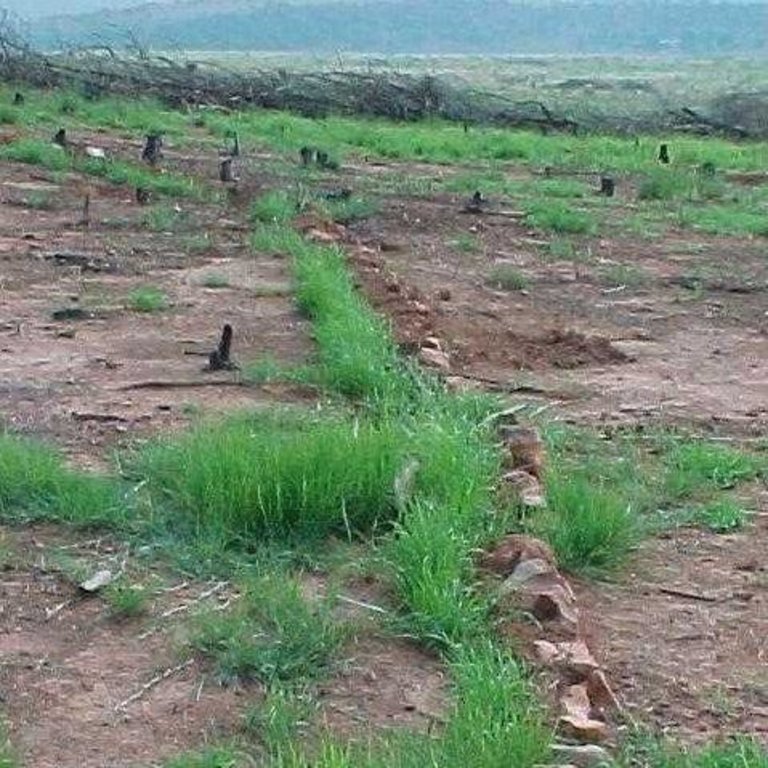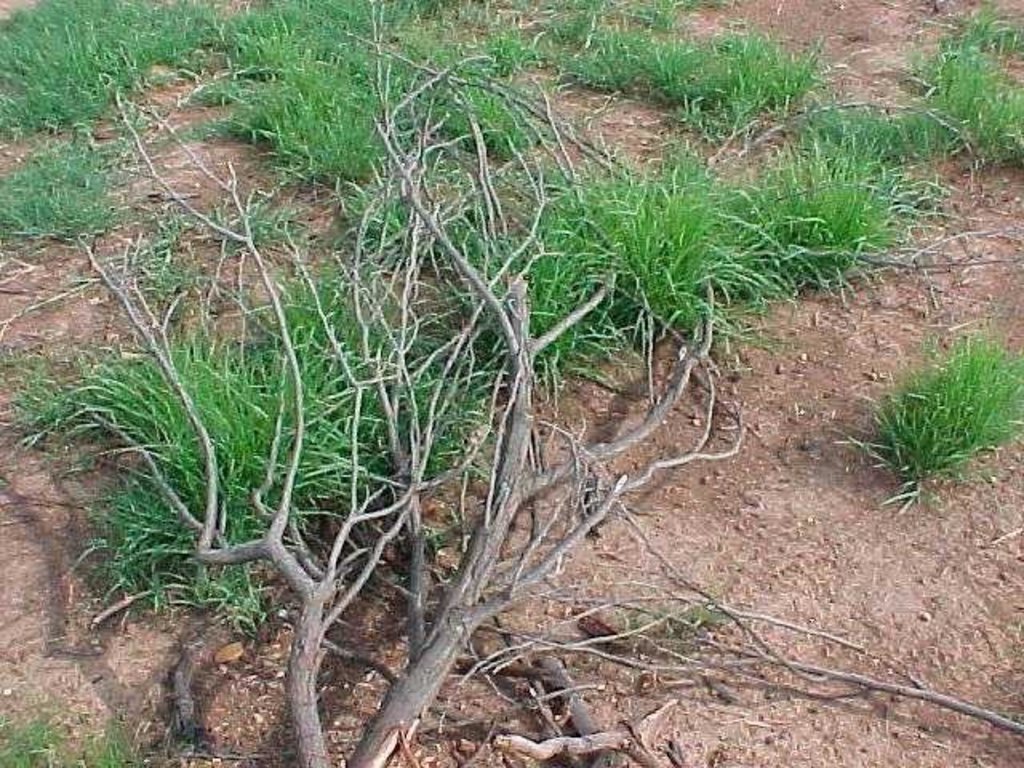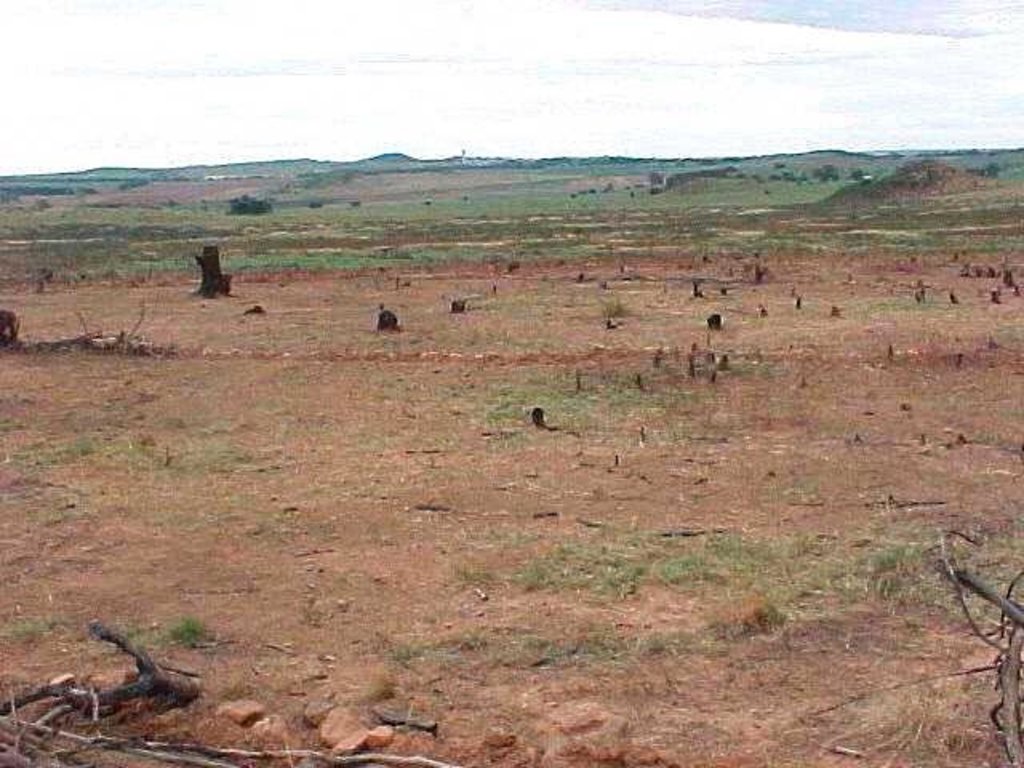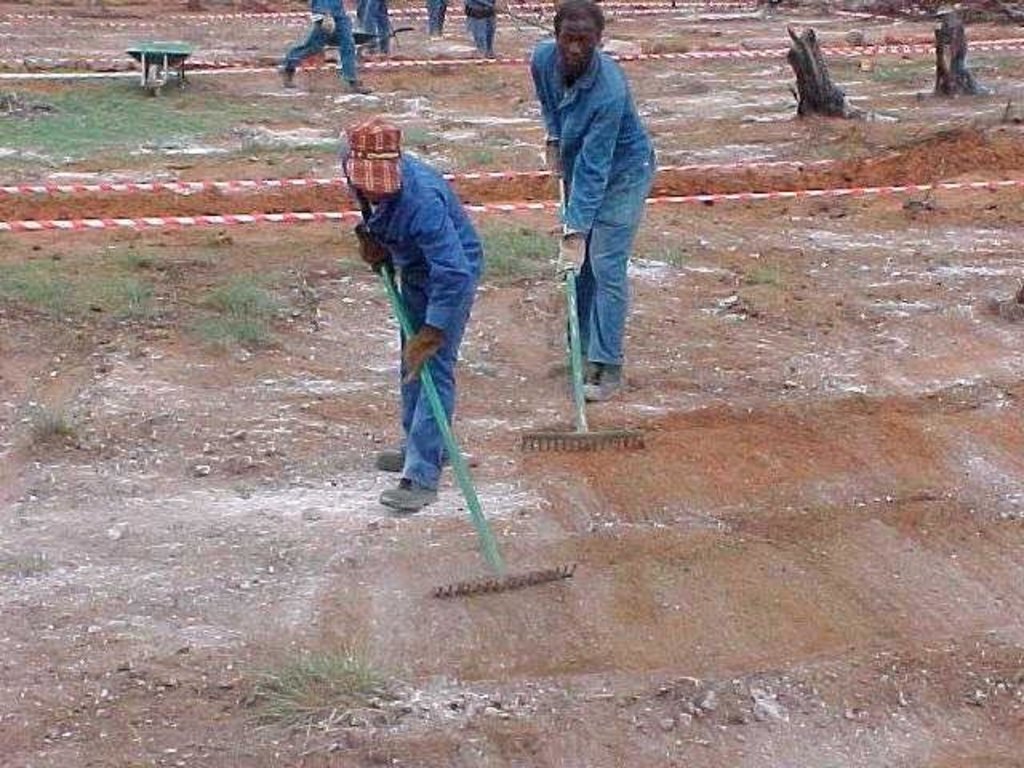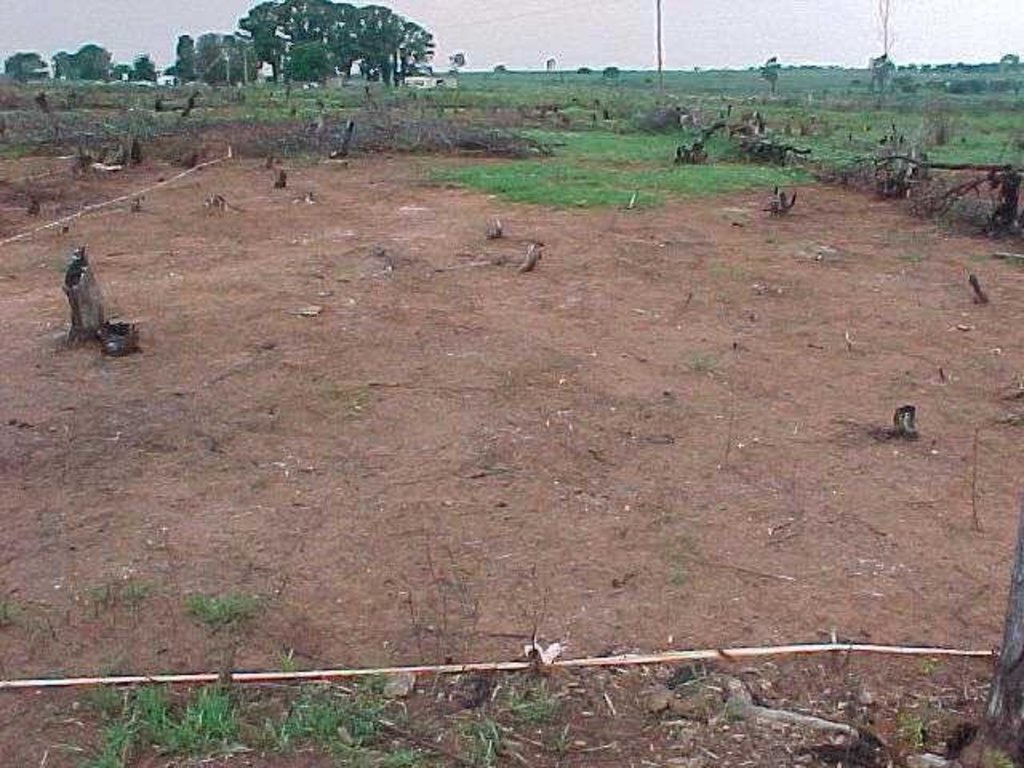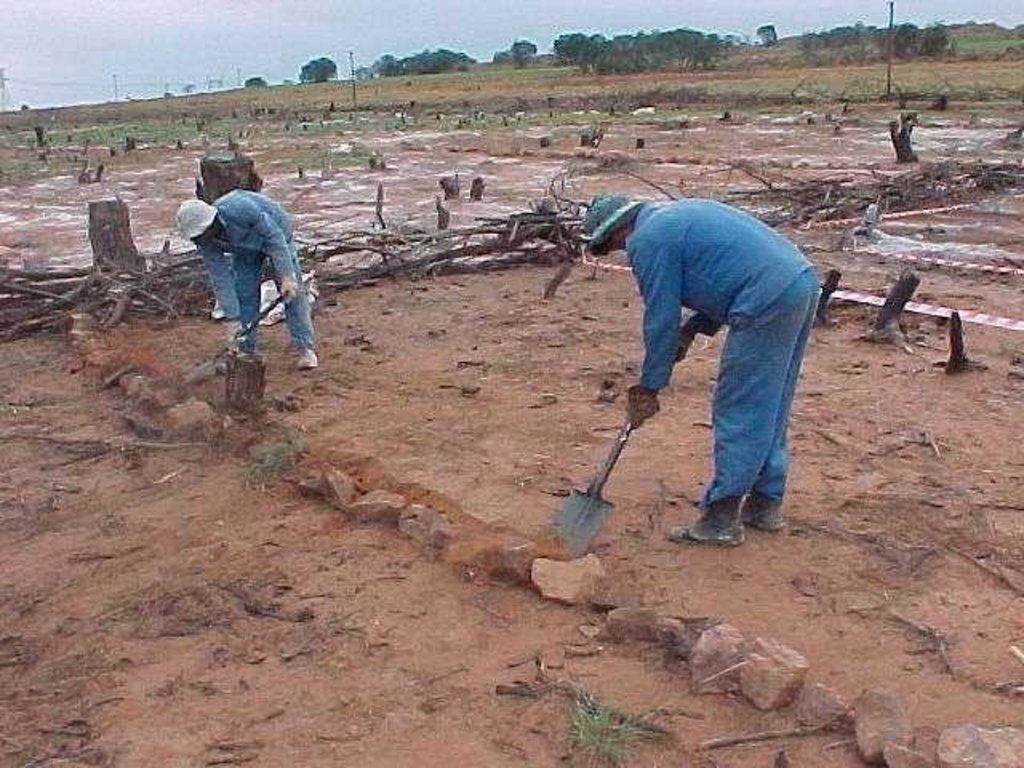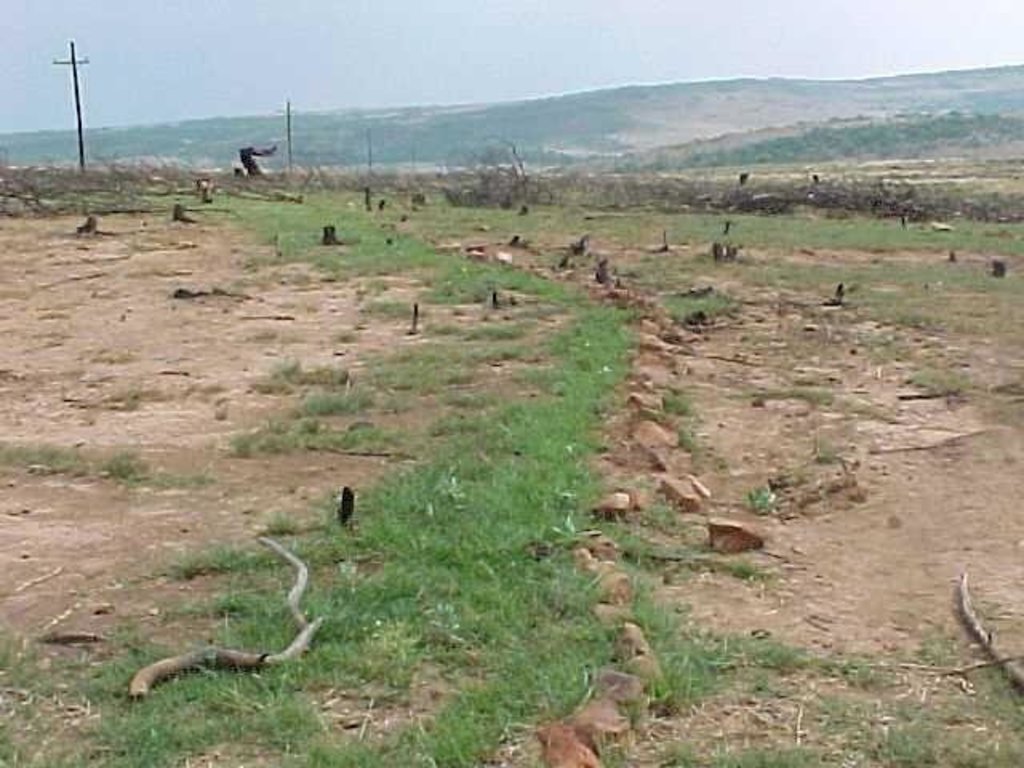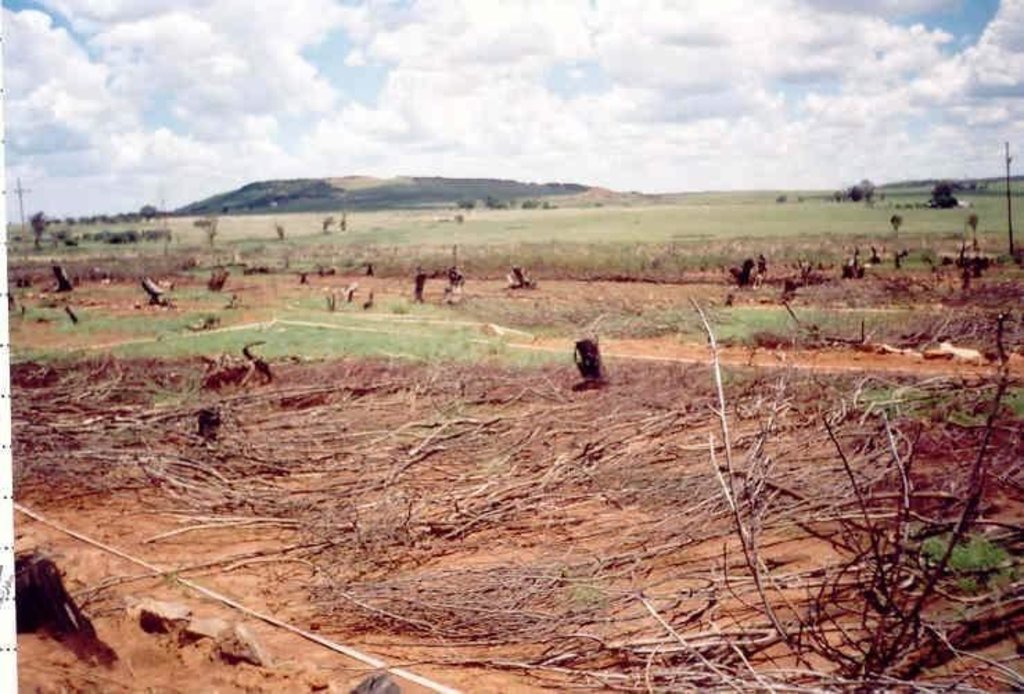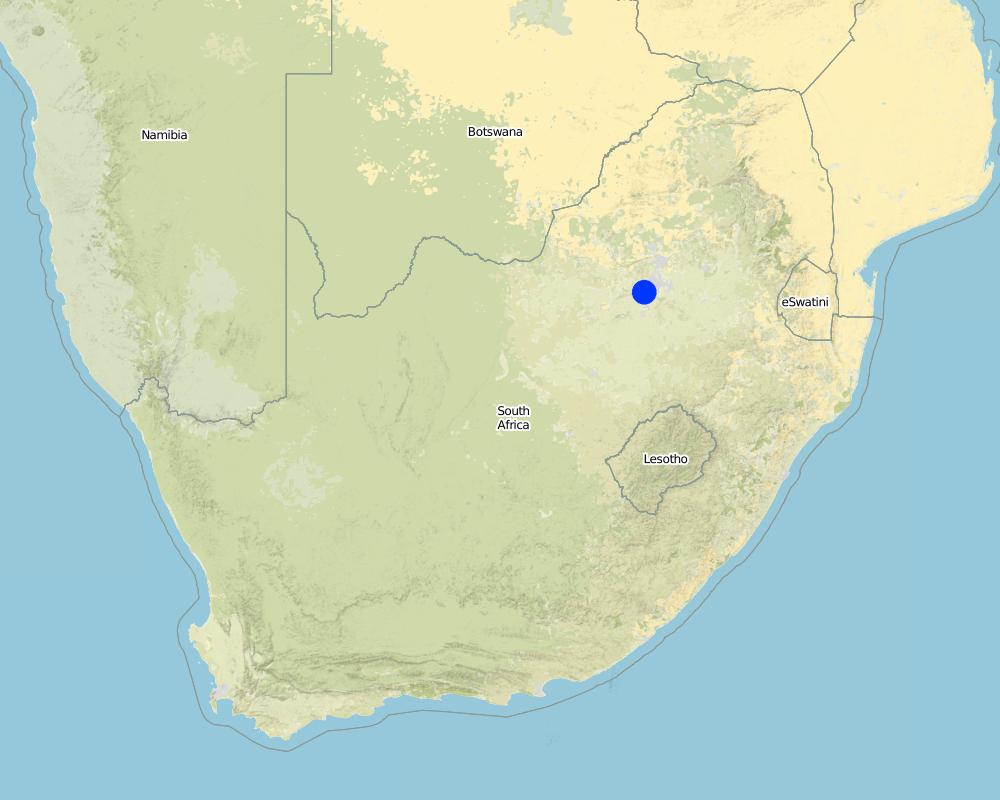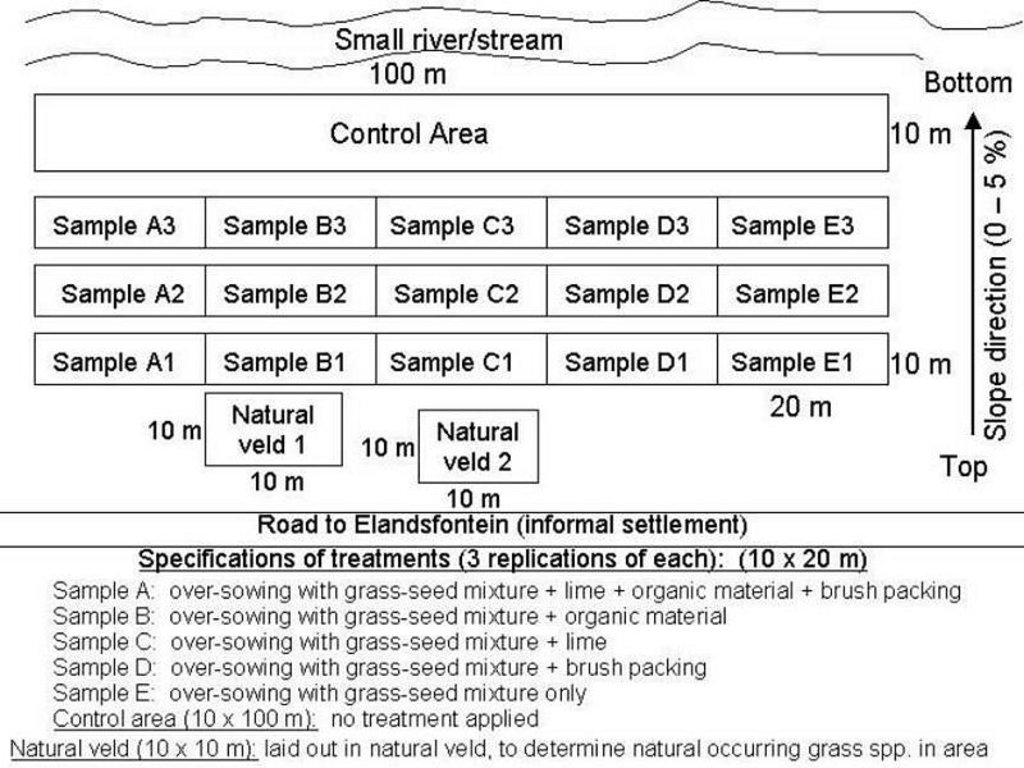Restoration of degraded rangeland [Afrique du Sud]
- Création :
- Mise à jour :
- Compilateur : Klaus Kellner
- Rédacteur : –
- Examinateurs : Deborah Niggli, Alexandra Gavilano
Rehabilitation/restoration of an area, after control of alien invasive species.
technologies_1416 - Afrique du Sud
Voir les sections
Développer tout Réduire tout1. Informations générales
1.2 Coordonnées des personnes-ressources et des institutions impliquées dans l'évaluation et la documentation de la Technologie
Spécialiste GDT:
Van Rensburg Leon
Afrique du Sud
Spécialiste GDT:
Fulls Erich
Afrique du Sud
Nom du projet qui a facilité la documentation/ l'évaluation de la Technologie (si pertinent)
Book project: where the land is greener - Case Studies and Analysis of Soil and Water Conservation Initiatives Worldwide (where the land is greener)Nom du projet qui a facilité la documentation/ l'évaluation de la Technologie (si pertinent)
Sustainable Land Management Practices of South Africa (SLM South Africa)1.3 Conditions relatives à l'utilisation par WOCAT des données documentées
Le compilateur et la(les) personne(s) ressource(s) acceptent les conditions relatives à l'utilisation par WOCAT des données documentées:
Oui
1.4 Déclaration sur la durabilité de la Technologie décrite
Est-ce que la Technologie décrite ici pose problème par rapport à la dégradation des terres, de telle sorte qu'elle ne peut pas être déclarée comme étant une technologie de gestion durable des terres?
Non
2. Description de la Technologie de GDT
2.1 Courte description de la Technologie
Définition de la Technologie:
Eradication of invasive species and revegetation of degraded rangelands by different treatments, including oversowing with grass seed mixture, supplementing with lime, cattle dung, and "brush packing" (laid out branches).
2.2 Description détaillée de la Technologie
Description:
A research investigation was undertaken in an area of degraded communal rangeland, which had been invaded by an alien tree species (Acacia mearnsii – black wattle). Competition from the water-demanding A. mearnsii, combined with overgrazing, had resulted in an almost total absence of palatable grasses. All that was left were a few patches of star grass (or ‘bermuda grass’: Cynodon dactylon). Prior to the research, discussions were held between personnel of the ‘Working for Water’ programme of the South African government and community members.
The purpose of the trials was to determine how best to eradicate the invasive trees and revegetate the rangeland. The restoration area was not fenced off and was thus open to grazing. The trials comprised five treatments, with three replicates each, on plots of 10 m by 20 m. In all treatments the A. mearnsii was eradicated manually, and chemical biocide applied to the stumps to prevent regrowth. Lime and grass seed (of palatable species) were applied to the loosened surface and covered with soil. The five treatments were:
(A) oversowing with grass seed mixture, supplementing of dolomitic lime, cattle dung, and ‘brush packing’ (see below for explanation of term);
(B) oversowing with grass seed mixture and supplementing with cattle dung;
(C) oversowing with grass seed mixture and supplementing with dolomitic lime;
(D) oversowing with grass seed mixture and brush packing;
(E) oversowing with grass seed mixture only.
In addition stone lines were laid out along the contour, between plots. The ‘brush packing’, referred to in treatments A and D comprised branches laid out in strips across the slope to retard runoff, trap soil, improve the micro-climate for establishing grass seedlings and protect the young plants from browsing by animals. The results showed treatment A to be the most effective in restoring the productive and protective function of the rangeland. From the trials, the estimated costs of applying the best technology would be US$ 230 per hectare. The key constraints for successful adoption however are not just technical, but include: (1) the need to protect the area from grazing and trampling by animals during the establishment period; (2) stopping removal of brushwood for firewood; and (3) the need for community agreement on initial protection and subsequent sustainable utilisation of the restored range.
Establishment activities:
1.Manual eradication of trees with chain saw and axe
2.Application of chemical biocide to the stumps to prevent any regrowth
3.Ripping of soil surface to a depth of 5 cm using a three tined hand implement
4.Application of dolomitic lime and raking it into soil after ripping of the soil
5.Application of organic material (cattle dung) after ripping and lime application
6.Oversowing with grass seed mixture after ripping of the soil and application of lime and organic material
7.Brush packing against contour and packing of rock contours against the slope All the branches and stones were collected from the restoration area. Rock contours were packed against (perpendicular) to the slope in the study area at varying intervals (approximately 10-15 m apart) in order to retard runoff water, trap soil, and improve conditions for seed germination (see inserted drawing below and attachment). Branches were packed (brush packing) along the slope in certain treatments within the study site in order to trap soil, retard runoff water en serve as a micro-climate for germinating and establishing grass seedlings
Total duration of restoration took 3 years, from removal of trees till revegetation trials were laid out and technology was established.
Maintenance / recurrent activities per year:
Following initial establishment maintenance was limited to 2 follow up applications of herbicide (after 3 and 5 months). Maintenance of contours was not done after restoration.
2.3 Photos de la Technologie
2.5 Pays/ région/ lieux où la Technologie a été appliquée et qui sont couverts par cette évaluation
Pays:
Afrique du Sud
Région/ Etat/ Province:
Gauteng
Autres spécifications du lieu:
Johannesburg
Spécifiez la diffusion de la Technologie:
- répartie uniformément sur une zone
Si la Technologie est uniformément répartie sur une zone, précisez la superficie couverte (en km2):
9,0
S'il n'existe pas d'informations exactes sur la superficie, indiquez les limites approximatives de la zone couverte:
- 1-10 km2
Commentaires:
Total area covered by the SLM Technology is 9 km2.
Big area near settlement, was previously invaded by alien invasive species (such as A. mearnsii). Aim was to eradicate this species by using chemical/manual methods and to revegetate area with grass species occurring naturally.
Map
×2.6 Date de mise en œuvre de la Technologie
Si l'année précise est inconnue, indiquez la date approximative: :
- il y a moins de 10 ans (récemment)
2.7 Introduction de la Technologie
Spécifiez comment la Technologie a été introduite: :
- au cours d'expérimentations / de recherches
Commentaires (type de projet, etc.) :
It originated from the overall need to restore degraded rangelands.
3. Classification de la Technologie de GDT
3.1 Principal(aux) objectif(s) de la Technologie
- réduire, prévenir, restaurer les terres dégradées
3.2 Type(s) actuel(s) d'utilisation des terres, là où la Technologie est appliquée

Pâturages
Pâturage extensif:
- Pastoralisme de type semi-nomade
- cattle
Commentaires:
Major land use problems (compiler’s opinion): Occurrence of bare areas after control of alien invasive.
Major land use problems (land users’ perception): Minimal grazing for cattle, due to the occurrence of bare areas.
Grazingland comments: No area closure, thus livestock graze freely on statelands and thus causes overgrazing over a large area.
This is a constraint to management in grazing lands. No rotational grazing. No area closure, thus livestock graze freely on statelands and thus causes overgrazing over a large area.
Number of growing seasons per year: 1
Longest growing period in days: 210, Longest growing period from month to month: Oct - April
3.4 Approvisionnement en eau
Approvisionnement en eau des terres sur lesquelles est appliquée la Technologie:
- pluvial
3.5 Groupe de GDT auquel appartient la Technologie
- pastoralisme et gestion des pâturages
3.6 Mesures de GDT constituant la Technologie

pratiques agronomiques
- A7: Autres

pratiques végétales
- V5: Autres

structures physiques
- S11: Autres
Commentaires:
Specification of other agronomic measures: manuring, lime, 'brush packing' (trash lines)
Specification of other vegetative measures: oversowing grass seed mixture
Specification of other structural measures: stone lines
Type of vegetative measures: in blocks
3.7 Principaux types de dégradation des terres traités par la Technologie

érosion hydrique des sols
- Wt: perte de la couche superficielle des sols (couche arable)/ érosion de surface

dégradation chimique des sols
- Cn: baisse de la fertilité des sols et réduction du niveau de matière organique (non causée par l’érosion)

dégradation physique des sols
- Pc: compaction

dégradation biologique
- Bc: réduction de la couverture végétale
Commentaires:
Main causes of degradation: deforestation / removal of natural vegetation (incl. forest fires) (Alien invasives.), over-exploitation of vegetation for domestic use (Trampling.), overgrazing (Cattle and goat.)
Secondary causes of degradation: poverty / wealth (Lack of captial - To pay labours to apply technologies.), labour availability (Lack of labour - To remove alien species.)
3.8 Prévention, réduction de la dégradation ou réhabilitation des terres dégradées
Spécifiez l'objectif de la Technologie au regard de la dégradation des terres:
- réduire la dégradation des terres
- restaurer/ réhabiliter des terres sévèrement dégradées
4. Spécifications techniques, activités, intrants et coûts de mise en œuvre
4.1 Dessin technique de la Technologie
Spécifications techniques (associées au dessin technique):
Specifications
Location: Elandsfontein. Gauteng
Technical knowledge required for field staff / advisors: high
Technical knowledge required for land users: moderate
Main technical functions: control of raindrop splash, control of dispersed runoff: retain / trap, increase in organic matter, sediment retention / trapping, sediment harvesting, increase in soil fertility, improvement of ground cover
Secondary technical functions: control of dispersed runoff: impede / retard, reduction of slope angle, increase of surface roughness, increase of infiltration, water harvesting / increase water supply, water spreading, reduction in wind speed, improvement of soil structure
Vegetative measure: contour
Vegetative material: O : other
Number of plants per (ha): 0
Vertical interval between rows / strips / blocks (m): 0.3
Spacing between rows / strips / blocks (m): 3
Vertical interval within rows / strips / blocks (m): 0
Width within rows / strips / blocks (m): 0.3
Vegetative measure: Vegetative material: O : other
Grass species: Mixture of perennial and annual grasses
Other species: rocks
Slope (which determines the spacing indicated above): 5.00%
Auteur:
Anuschka Barac
4.2 Informations générales sur le calcul des intrants et des coûts
autre/ monnaie nationale (précisez):
Rand
Indiquez le taux de change des USD en devise locale, le cas échéant (p.ex. 1 USD = 79.9 réal brésilien): 1 USD = :
8,2
Indiquez le coût salarial moyen de la main d'œuvre par jour:
4.30
4.3 Activités de mise en place/ d'établissement
| Activité | Calendrier des activités (saisonnier) | |
|---|---|---|
| 1. | Eradication of trees, Follow-up with herbicide | beginning of project |
| 2. | Loosening of soil, Lime application | 6 months |
| 3. | Application of organic material | 6 months |
| 4. | Oversowing with grass seed mixture | 6 months |
| 5. | Brush packing | 6 months |
4.4 Coûts et intrants nécessaires à la mise en place
| Spécifiez les intrants | Unité | Quantité | Coûts par unité | Coût total par intrant | % du coût supporté par les exploitants des terres | |
|---|---|---|---|---|---|---|
| Main d'œuvre | labour | ha | 1,0 | 35,0 | 35,0 | |
| Equipements | machine use | ha | 1,0 | 65,0 | 65,0 | |
| Equipements | tools | ha | 1,0 | 5,0 | 5,0 | |
| Matériel végétal | seeds | ha | 1,0 | 70,0 | 70,0 | |
| Engrais et biocides | fertilizer | ha | 1,0 | 25,0 | 25,0 | |
| Engrais et biocides | biocides | ha | 1,0 | 30,0 | 30,0 | |
| Coût total de mise en place de la Technologie | 230,0 | |||||
| Coût total de mise en place de la Technologie en dollars américains (USD) | 28,05 | |||||
Commentaires:
Duration of establishment phase: 35 month(s)
4.5 Activités d'entretien/ récurrentes
| Activité | Calendrier/ fréquence | |
|---|---|---|
| 1. | 2 Follow-ups with herbicide | after 3 & 5 months after application of technology /twice (at 3 and 5 months ) |
4.6 Coûts et intrants nécessaires aux activités d'entretien/ récurrentes (par an)
| Spécifiez les intrants | Unité | Quantité | Coûts par unité | Coût total par intrant | % du coût supporté par les exploitants des terres | |
|---|---|---|---|---|---|---|
| Main d'œuvre | labour | ha | 1,0 | 7,0 | 7,0 | |
| Equipements | tools | ha | 1,0 | 5,0 | 5,0 | |
| Engrais et biocides | biocides | ha | 1,0 | 20,0 | 20,0 | |
| Coût total d'entretien de la Technologie | 32,0 | |||||
| Coût total d'entretien de la Technologie en dollars américains (USD) | 3,9 | |||||
Commentaires:
Eradication, seed purchasing, materials.
4.7 Facteurs les plus importants affectant les coûts
Décrivez les facteurs les plus importants affectant les coûts :
Biocides, fertilisers (lime), seeds and labour have a great effect on costs.
5. Environnement naturel et humain
5.1 Climat
Précipitations annuelles
- < 250 mm
- 251-500 mm
- 501-750 mm
- 751-1000 mm
- 1001-1500 mm
- 1501-2000 mm
- 2001-3000 mm
- 3001-4000 mm
- > 4000 mm
Spécifications/ commentaires sur les précipitations:
600 - 800 mm/annum
Zone agro-climatique
- subhumide
5.2 Topographie
Pentes moyennes:
- plat (0-2 %)
- faible (3-5%)
- modéré (6-10%)
- onduleux (11-15%)
- vallonné (16-30%)
- raide (31-60%)
- très raide (>60%)
Reliefs:
- plateaux/ plaines
- crêtes
- flancs/ pentes de montagne
- flancs/ pentes de colline
- piémonts/ glacis (bas de pente)
- fonds de vallée/bas-fonds
Zones altitudinales:
- 0-100 m
- 101-500 m
- 501-1000 m
- 1001-1500 m
- 1501-2000 m
- 2001-2500 m
- 2501-3000 m
- 3001-4000 m
- > 4000 m
5.3 Sols
Profondeur moyenne du sol:
- très superficiel (0-20 cm)
- superficiel (21-50 cm)
- modérément profond (51-80 cm)
- profond (81-120 cm)
- très profond (>120 cm)
Texture du sol (de la couche arable):
- moyen (limoneux)
Matière organique de la couche arable:
- faible (<1%)
5.6 Caractéristiques des exploitants des terres appliquant la Technologie
Orientation du système de production:
- subsistance (auto-approvisionnement)
- commercial/ de marché
Revenus hors exploitation:
- > 50% de tous les revenus
Niveau relatif de richesse:
- moyen
- très riche
Indiquez toute autre caractéristique pertinente des exploitants des terres:
Population density: 10-50 persons/km2
Annual population growth: 3% - 4%
80% of the land users are very rich (informal settlers and own 60% of the land (government).
20% of the land users are average wealthy and own 40% of the land (farmers).
Off-farm income specification: Informal settlers work in the city/mine, also mostly live of old age pension funds. Farmers (low percentage) have an income on-farm by means of selling cattle, crops and dairy products.
5.7 Superficie moyenne des terres utilisées par les exploitants des terres appliquant la Technologie
- < 0,5 ha
- 0,5-1 ha
- 1-2 ha
- 2-5 ha
- 5-15 ha
- 15-50 ha
- 50-100 ha
- 100-500 ha
- 500-1 000 ha
- 1 000-10 000 ha
- > 10 000 ha
5.8 Propriété foncière, droits d’utilisation des terres et de l'eau
Propriété foncière:
- état
- provincial government
- provincial government
6. Impacts et conclusions
6.1 Impacts sur site que la Technologie a montrés
Impacts socio-économiques
Production
gestion des terres
Commentaires/ spécifiez:
Brush packing was removed by community members for firewood.
Revenus et coûts
revenus agricoles
charge de travail
Commentaires/ spécifiez:
Not all labourers could be employed, more would have like to have the job (money).
Impacts socioculturels
institutions communautaires
connaissances sur la GDT/ dégradation des terres
Commentaires/ spécifiez:
Capacity building awareness
apaisement des conflits
Commentaires/ spécifiez:
Farmers not positive about SWC project and effect.
Impacts écologiques
Cycle de l'eau/ ruissellement
drainage de l'excès d'eau
Sols
humidité du sol
couverture du sol
perte en sol
Quantité avant la GDT:
2
Quantité après la GDT:
1
Réduction des risques de catastrophe et des risques climatiques
vitesse du vent
6.2 Impacts hors site que la Technologie a montrés
inondations en aval
envasement en aval
sédiments (indésirables) transportés par le vent
6.4 Analyse coûts-bénéfices
Quels sont les bénéfices comparativement aux coûts de mise en place (du point de vue des exploitants des terres)?
Rentabilité à court terme:
légèrement négative
Rentabilité à long terme:
positive
Quels sont les bénéfices comparativement aux coûts d'entretien récurrents (du point de vue des exploitants des terres)?
Rentabilité à court terme:
positive
Rentabilité à long terme:
légèrement négative
6.5 Adoption de la Technologie
Commentaires:
10 land user families have adopted the Technology with external material support
1 land user families have adopted the Technology without any external material support
There is a little trend towards spontaneous adoption of the Technology
6.7 Points forts/ avantages/ possibilités de la Technologie
| Points forts/ avantages/ possibilités du point de vue de l'exploitant des terres |
|---|
| Gazing improvement. |
| Points forts/ avantages/ possibilités du point de vue du compilateur ou d'une autre personne ressource clé |
|---|
| Improvement of grazing resources. |
| Improved soil moisture availability by removing an alien species with a high water demand. |
| Reduced erosion by controlling runoff. |
6.8 Faiblesses/ inconvénients/ risques de la Technologie et moyens de les surmonter
| Faiblesses/ inconvénients/ risques du point de vue du compilateur ou d'une autre personne ressource clé | Comment peuvent-ils être surmontés? |
|---|---|
| The question of controlling ‘open access’ grazing by the community is the key to long-term success of rehabilitation | It is incumbent on the local municipal council to negotiate with communities regarding grazing control and community-based natural resource management more generally. |
| Removal of brushwood for firewood by community members and other aspects of long-term maintenance | See above: perhaps also seeking funds to pay labourers and buy biocides |
| Too many cattle and goats. | Reduce numbers to match grazing resources available |
| Insufficient aftercare. | Secure additional funds to pay labourers and buy biocides. |
7. Références et liens
7.1 Méthodes/ sources d'information
- visites de terrain, enquêtes sur le terrain
- interviews/entretiens avec les exploitants des terres
Quand les données ont-elles été compilées (sur le terrain)?
28/09/2001
7.2 Références des publications disponibles
Titre, auteur, année, ISBN:
Soil classification: A taxonomic system for South Africa.. 1991.
Disponible à partir d'où? Coût?
ARC -Institute for Soil, Climate and Water, Pretoria. 012 - 3102500.
Titre, auteur, année, ISBN:
Harris J.A., Birch P., Palmer J.P. Land restoration and reclamation.. 1996.
Titre, auteur, année, ISBN:
Kent M, Coker P. Vegetation description and analysis.. 1997.
Titre, auteur, année, ISBN:
Tainton N. Veld management in South Africa.. 1999.
Titre, auteur, année, ISBN:
Acocks. Veld types of South Africa.. 1988.
Titre, auteur, année, ISBN:
HARRIS, J. A., BIRCH, P. AND PALMER, J. P. Land restoration and reclamation – Principles and Practices. Addison Wesley Longman, England. 230 p.. 1996.
Liens et modules
Développer tout Réduire toutLiens
Aucun lien
Modules
Aucun module trouvé


